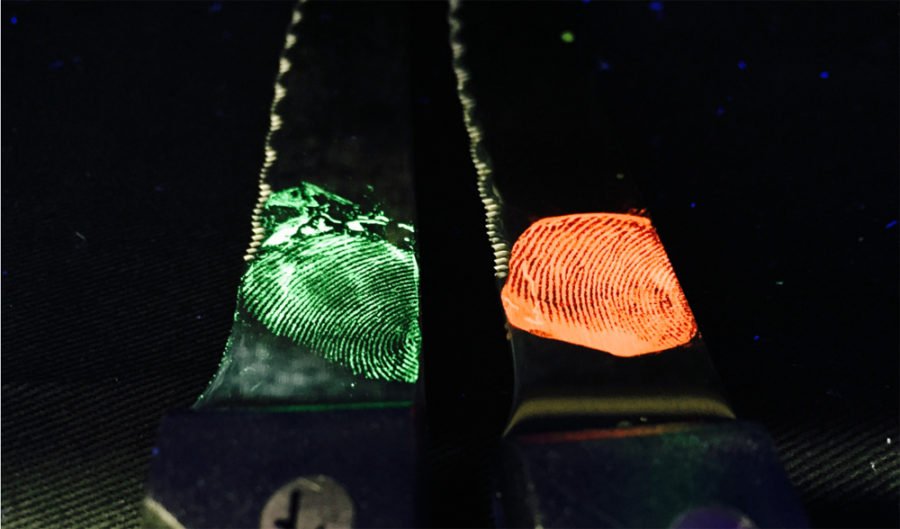Glowing fingerprints give criminals away

A NEW TECHNIQUE that makes fingerprints glow under UV light in one simple step could increase the accuracy and speed at which police identify criminals.
Dr Kang Liang, a materials scientist at the CSIRO, led the development of the technique after his house was broken into last year. He had been working with crystals at the time, leading Kang to wonder if they could be used for fingerprinting.
A few months later, he had developed a technique that can make invisible fingerprints glow within 20 seconds, using a liquid solution.
“Basically, it’s a kind of crystal that looks just like sugar or salt crystals,” explains Kang. The crystals bind to fingerprint residue, including proteins, fatty acids and salts, creating a highly accurate replica at a molecular level, with very low risk of damaging the print.
The immediacy of this process also means glowing fingerprints can be photographed and run through a database remotely from the crime scene. With current procedures, they would need to be sent to a lab for treatment before a match could be made.
Crystals to help with forensic fingerprinting
Sergeant Duncan McCarthy, a fingerprint expert with Queensland Police, says the technique has real potential to help investigations.
“We normally can achieve similar results, but these results require a treatment with superglue fuming first. If this particular method doesn’t require any other pre-treatment… then this could have a definite operational and cost-saving benefit for us,” he says.
The technique, published in this week’s issue of Advanced Materials, only works on non-porous surfaces like metal, plastic and glass, but Kang is already investigating methods that could work on porous surfaces like paper and cloth.
“Fabric traditionally has [posed], and continues to pose, a big challenge for us, so that would be something completely different,” says Duncan.
Crime scene fingerprint techniques
Forensic experts have used ‘dusting’, the fingerprinting technique commonly seen on crime shows, for more than 100 years. It involves a reaction between fine carbon-based power, and the moisture left after a fingerprint.
While it’s a reasonably cheap and effective method, it’s generally only used at crime scenes to identify fingerprints on larger, fixed items, and can damage fingerprints in the process.
Superglue fuming is another standard fingerprinting procedure. Superglue reacts with the chemicals left behind when we touch something, producing a white substance along the ridges of the fingerprint, which is then photographed.

